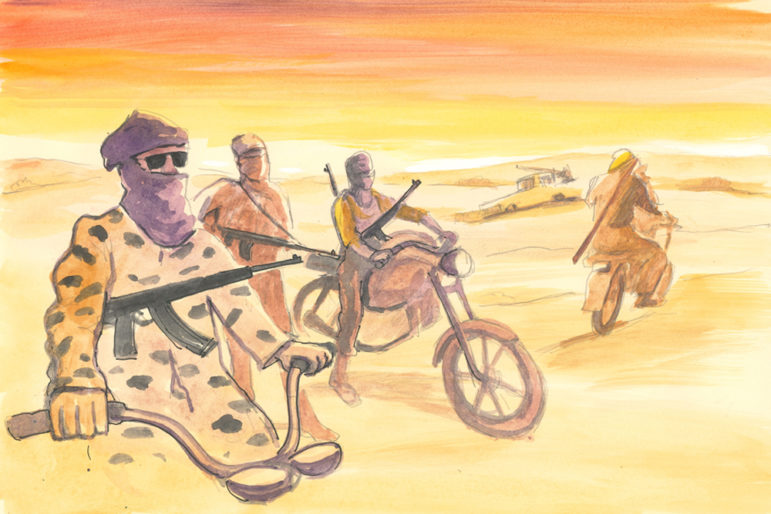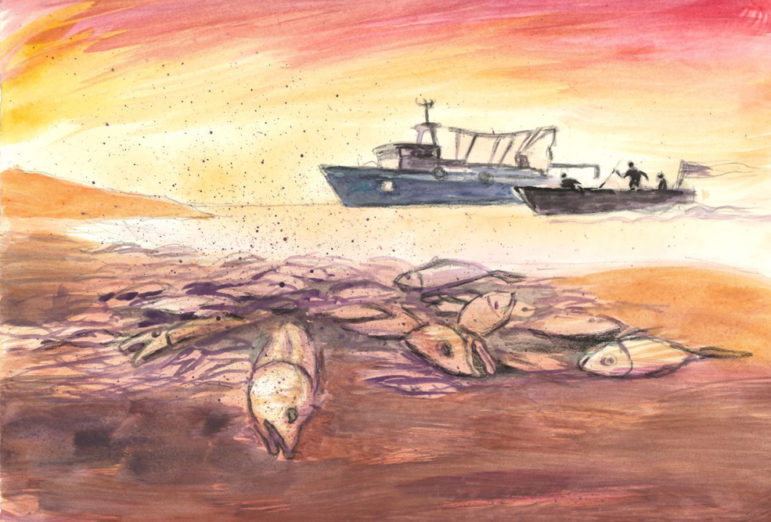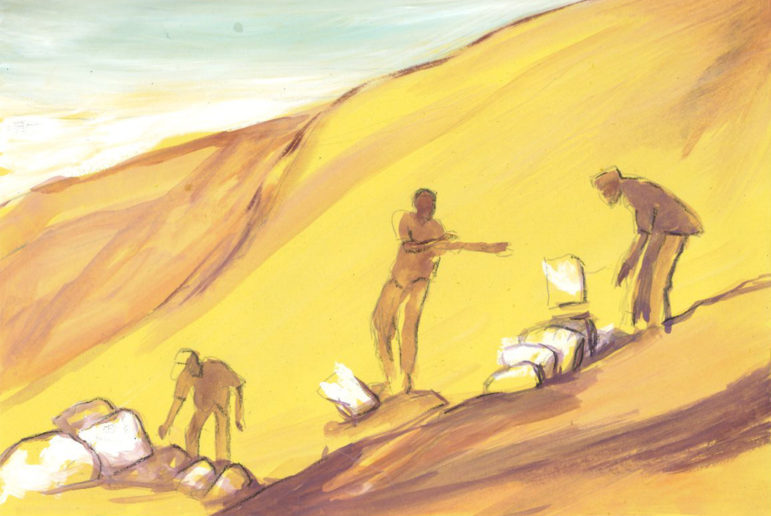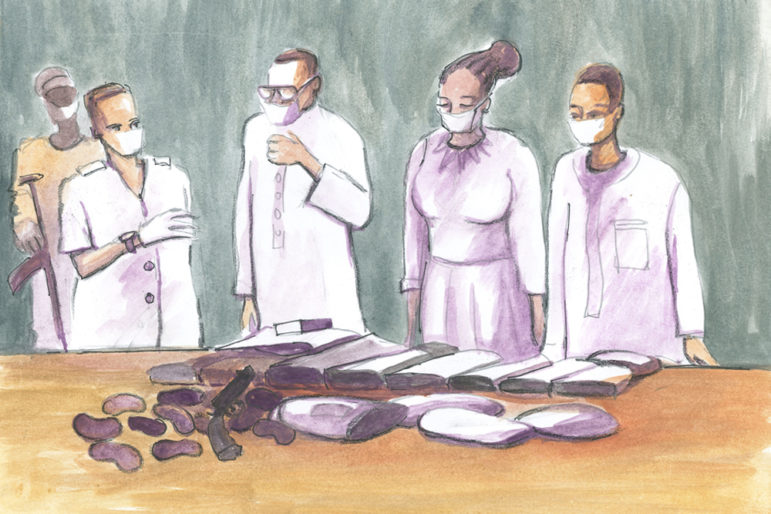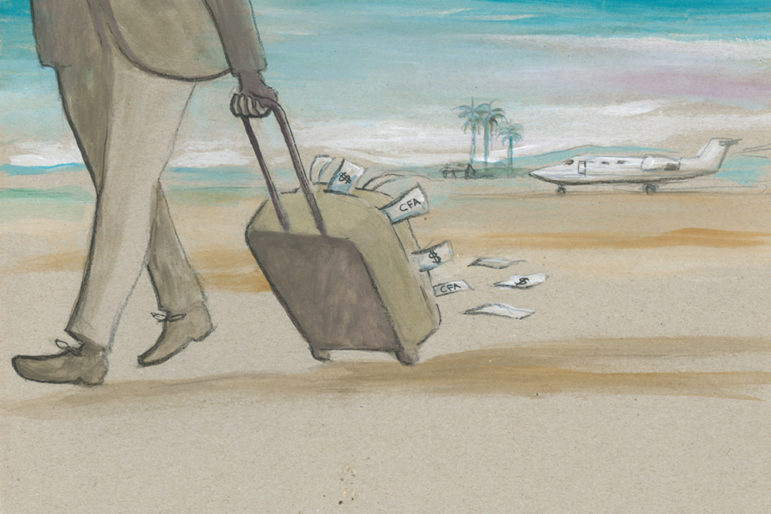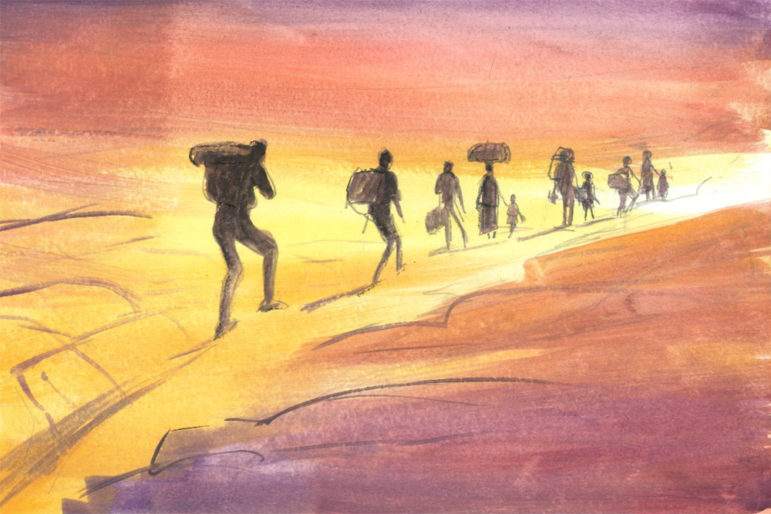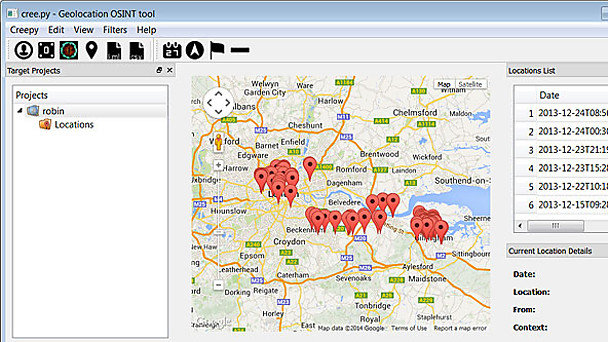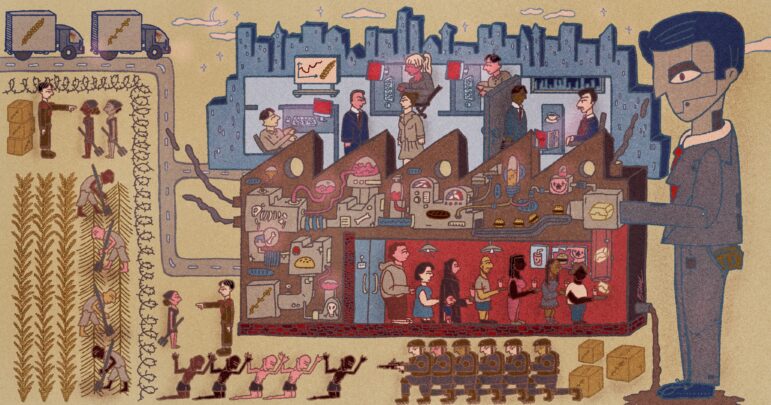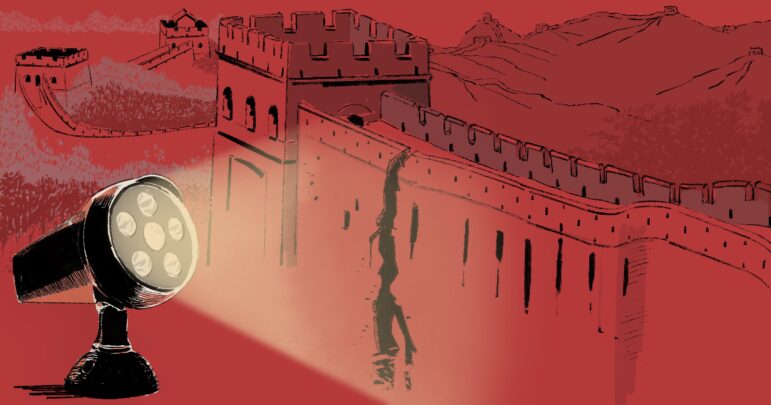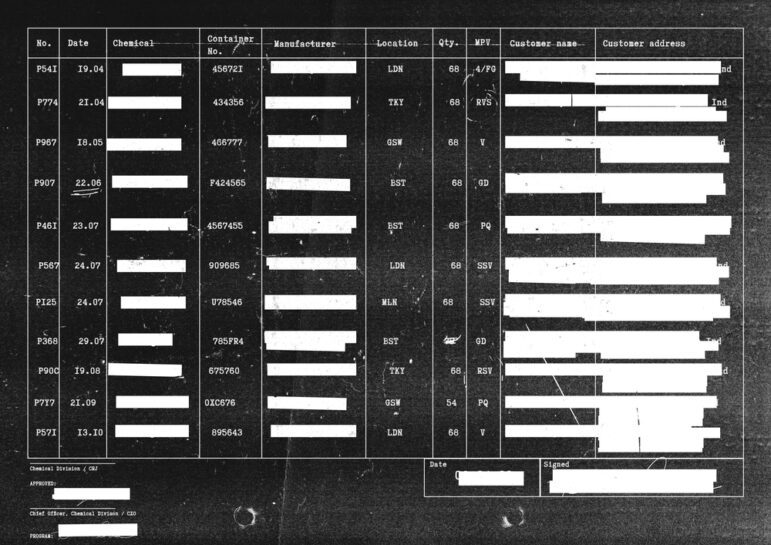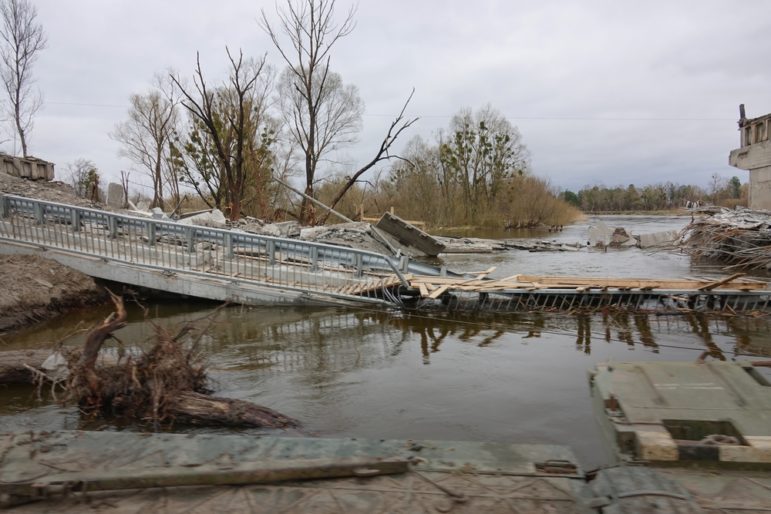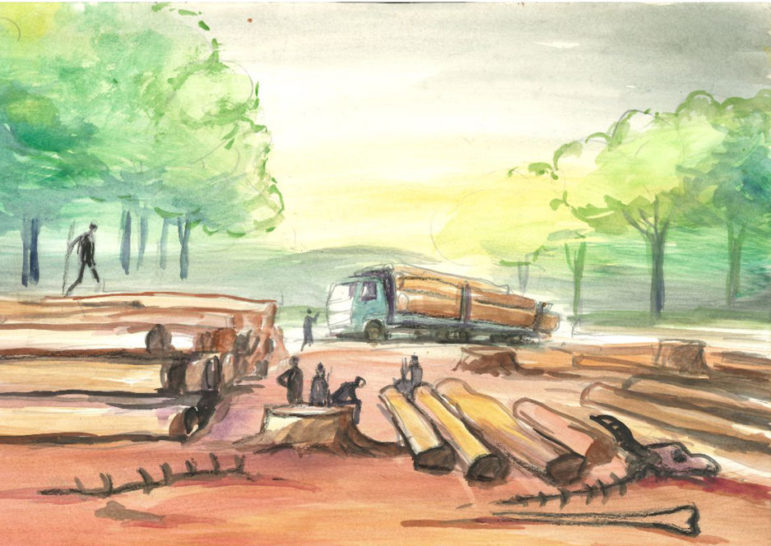

Guide to Investigating Organized Crime in Africa: Chapter 1 — Environmental Crimes
Read this article in
Guide Resource
Guide to Investigating Organized Crime in Africa
Chapter Guide Resource
Guide to Investigating Organized Crime in Africa — Introduction
Chapter Guide Resource
Guide to Investigating Organized Crime in Africa: Chapter 1 — Environmental Crimes
Chapter Guide Resource
Guide to Investigating Organized Crime in Africa: Chapter 2 — Terrorist and Militia Groups
Chapter Guide Resource
Guide to Investigating Organized Crime in Africa: Chapter 3 — Crimes on the Oceans
Chapter Guide Resource
Guide to Investigating Organized Crime in Africa: Chapter 4 — Arms Trafficking
Chapter Guide Resource
Guide to Investigating Organized Crime in Africa: Chapter 5 — Natural Resources Theft
Chapter Guide Resource
Guide to Investigating Organized Crime in Africa: Chapter 6 — Drug Trafficking
Chapter Guide Resource
Guide to Investigating Organized Crime in Africa: Chapter 7 — Financial Crimes
Chapter Guide Resource
Guide to Investigating Organized Crime in Africa: Chapter 8 — Kleptocracies
Chapter Guide Resource
Guide to Investigating Organized Crime in Africa: Chapter 9 — Other Crimes
Environmental crime is the world’s fourth largest form of organized crime, behind only drug trafficking, counterfeiting, and human trafficking, according to the United Nations Environment Programme (UNEP). At the same time, environmental crimes are increasingly prevalent in Africa: each year, the continent loses an estimated US$195 billion “through illicit financial flows, illegal mining, illegal logging, the illegal trade in wildlife, unregulated fishing and environmental degradation and loss,” UNEP reports. This is a rich field for journalists, with stories ranging from local polluters and corrupt officials to international smugglers and money launderers.
Africa is home to 30% of global mineral reserves, 8% of its natural gas and 12% of its oil reserves. In terms of the world’s untapped mineral wealth, the continent has the world’s largest reserves of cobalt, diamond, platinum, and uranium, as well as 40% of its gold. UNEP adds that Africa has 65% of the world’s fertile land and 10% of its domestic sustainable fresh water. These abundant natural resources, as well as biodiversity, public health, and the global climate, are now at risk due to environmental criminal networks.
The continent “had the highest net loss of forest area in the decade to 2020,” according to a 2020 report by the UN’s Food and Agriculture Organization, which also stated that Africa had an annual rate of net forest loss of 3.94 million hectares from 2010 to 2020. Sub-Saharan Africa accounts for most of the losses. Wildlife, too, is disappearing at alarming rates. A UN Office of Drugs and Crime report estimates that 157,000 elephants were poached in Africa between 2010 and 2018, an average of about 17,000 elephants per year.

Deforestation in the Bwindi Impenetrable National Park in southwest Uganda. According to the UN’s Food and Agriculture Organization, Africa had the highest net loss of forest area in the decade 2010-2020. Image: Shutterstock
Undertaking environmental crimes investigations in sub-Saharan Africa could be quite challenging because of poor governance and lack of transparency in many countries. But, there is room for investigations. Here are some key points to consider when digging into this topic:
- Environmental crimes are transnational problems — understand the context: When investigating environmental crimes in Africa, journalists should consider African context and culture. This means looking at the global picture of environmental crime and contextualizing it to fit African challenges. Among the most pressing environmental challenges in Africa nowadays are land-grabbing due to infrastructure or agribusiness projects, water and river pollution, deforestation, desertification, trafficking of endangered species, and violations of Indigenous peoples’ rights. Criminal networks are usually involved in all these areas.
- Map the useful sources: It is not always easy to know who to reach when investigating environmental crimes in Africa. Some countries have a lot of experts in this field while others have just a few trusted groups with the skills and knowledge to combat environmental crime. Identify national and international NGOs, and public officials working on security or the environment. Then, through these sources, find local experts and people from Indigenous communities. Read reports by NGOs, scientists, and government officials on environmental challenges or projects. Sometimes the reports might be only slightly connected to environmental crimes, but you can find leads and insight. Some NGOs to watch for are the EAGLE Network, LAGA, and the Institute for Security Studies. Scientific groups on the continent include the WASCAL, Africa Center for Strategic Studies, ARUA Centre of Excellence in Climate and Development, and Future Climate For Africa.
- Collaborate, collaborate, collaborate: As for any other cross-border topic, collaboration is a powerful tool for journalists investigating environmental crimes. The more you collaborate, the more leads you get. Oxpeckers Center for Investigative Environmental Journalism, an African investigative newsroom focusing on environmental crimes, built its work on collaboration. Such projects could be among journalists or between journalists and NGOs or hubs of experts.
- Use data and documents: It can be quite difficult to get data or documents in some African countries. “In a region like Central Africa, governments tend to conduct the business of the citizens with utmost secrecy, little transparency, and a total disregard for accountability,” says David Akana, managing editor of geo-journalism platform InfoCongo. The InfoCongo team usually partners with lawyers to get documents for their reports. They also have a growing community of data journalists using data to substantiate and visualize their reporting.
- Building and cleaning datasets: Be prepared to process your own data. Getting access to good quality data sets — especially from government agencies — is a challenge for journalists. “In the instances where official bodies do share data with us, we usually have to clean and re-work it before we can add it to our geo journalism platforms and tools,” says Oxpeckers founder Fiona Macleod.
- Investigate if public officials are involved: Environmental crimes are rarely the result of single acts by private companies. As elsewhere around the world, in Africa, public officials become accomplices and facilitate operations, either by issuing false documents, turning a blind eye to crimes, or helping criminals evade justice. Sometimes, in countries where impunity is common, some do not hesitate to expose their assets or investments. By keeping an eye on the abnormal enrichment of public officials in environmental departments, one may come across threads that lead to large crime networks.
- Check legal exports: Some operators on the continent who have official authorization to export timber or wildlife may exceed their allowed quotas, or include products from illegal activities in their businesses. Journalists should monitor these companies’ activities to ensure their operations are legal.
- Take time to immerse yourself in the subject matter: Training is a good way to improve your skills, and this is particularly important when it comes to investigating environmental crimes, which can be complex topics.
- Community voices matter: Beyond the environmental aspect, tell the story of how environmental crimes affect people’s finances, their security, social life, food supply, and well-being.
- Drones are useful: Finally, consider using drones and drone journalism in order to get aerial images and investigate what might not be visible from the ground.
International and Pan-African Organizations
- IUCN Red List of Threatened Species: The International Union for Conservation of Nature’s Red List of Threatened Species is a great source on the global extinction risk status of animal, fungus, and plant species. Through this website, journalists can search by species and find information on population size, habitat and ecology, use and/or trade, threats, and necessary conservation actions to better protect the species.
- TRAFFIC: The world’s largest NGO monitoring the wildlife and timber trades. The team has produced numerous investigative reports on environmental crimes in Africa.
- Environmental Investigation Agency: an international NGO investigating environmental crime abuses worldwide. EIA divides its work among four key topics: climate, forest, ocean, and wildlife. Some of its reports focus on environmental crimes in African countries.
- African Wildlife Foundation: This pan-African trust aims to address the funding gap for Africa’s protected and conserved areas. The group is a good source for information on the main challenges facing conservation in Africa.
- UN Office on Drugs and Crime: The UNODC collaborates with countries to tackle crimes. Its website offers journalists resources on environmental crimes by region: Eastern and Southern Africa as well as West and Central Africa. They also produce useful reports with data analysis on the scale of environmental crimes. Here, for example, is its 2022 report on timber trafficking.
Environmental Open Data Portals
Journalists can download data from the platforms listed below and do their own data analysis. Here are some examples:
- Protected Planet: This is a great resource for journalists looking for data on protected areas in Africa, as this data is usually difficult to get online from government websites. For instance, journalists can filter by country for a list of all protected areas, and then download the data in pdf, shapefile, or csv file formats.
- CITES Checklist of Species: The Convention on International Trade in Endangered Species of Wild Fauna and Flora (CITES) aims to ensure that international trade in wild animals and plants does not harm their survival. For investigations on wildlife crimes in Africa, CITES offers a must-use database. It provides a list of all endangered species banned in international trade. You can find the name of the species, the year its trade was banned, and the source countries of these species.
- Global Forest Watch: To overcome the lack of government data, journalists investigating deforestation or forest change can get updated data through Global Forest Watch. GFW offers real time satellite imagery analysis to identify, for example, areas with increasing tree cover loss. Forest Atlas offers more specific datasets on forest management and land use. In Africa, eight countries have Forest Atlases: Cameroon, Central African Republic, Republic of Congo, Democratic Republic of Congo, Equatorial Guinea, Gabon, Liberia, and Madagascar. InfoCongo usually explores this platform to investigate deforestation in the Congo basin rainforest. To get started, see the Help Center or this Mongabay webinar on how to use it.
- Open Timber Portal: This resource helps journalists to investigate forest management and harvesting through information on timber producers’ profiles. The platform includes information on official concessions and lists of registered timber producers.
Useful Reports on Environmental Problems in Africa
Through their investigations, NGOs and research centers offer many resources to journalists investigating environmental crimes in Africa. Here are a few examples of reports on environmental crimes in Africa:
- Illegal Logging in Africa and Its Security Implications, Africa Center for Strategic Studies, 2022.
- The Global Trade In Donkey Skins: A Ticking Time Bomb, The Donkey Sanctuary, 2022.
- Al-Shabaab and Chinese Trade Practices in Mozambique, Henry Tugendhat and Sérgio Chichava, War on the Rocks, September 23, 2021.
- Cashing In on Chaos: How Traffickers, Corrupt officials, and Shipping Lines in The Gambia Have Profited from Senegal’s Conflict Timber, Environmental Investigation Agency, 2020.
- Women in Wildlife Trafficking in Africa: A Synthesis of Literature, Science Direct, 2020.
- Out of Africa: How West and Central Africa Have Become the Epicentre of Ivory and Pangolin Scale Trafficking to Asia, Environmental Investigations Agency, 2020.
- Razing Africa: Combatting Criminal Consortia in the Logging Sector, ENACT, December 2018.
- The Extinction Business: South Africa’s ‘Lion’ Bone Trade, Elizabeth Margaret Steyn, EMS Foundation, 2018.
- Out of Africa: Byting Down on Wildlife Cybercrime, International Fund for Animal Welfare, 2017.
Journalists should also visit these websites for updated reports:
- ENACT – Enhancing Africa’s Response to Transnational Organized Crime
- Global Initiative Against Transnational Organized Crime
- Interpol
- Environmental Investigations Agency
Case Studies
Post Lockdown Poaching: A Threat to Conservation in Endowed Pearl of Africa, InfoNile (2022)
This InfoNile investigation into wildlife crime shows how poaching increased during the COVID-19 lockdown in Uganda and the efforts by conservation authorities to fight back. InfoNile partnered with Oxpeckers to produce a geo-data map of wildlife recent crime cases recorded in Uganda.
Bushmeat Trade Poses a New Threat to Tanzania’s Endangered Giraffes, Oxpeckers (2022)
This Oxpeckers investigation into the bushmeat trade shows how increasing human activities has fueled poaching of giraffes for game meat and animal fat in northern Tanzania. The team combined court cases and other public records with expert interviews.
An Opaque Agro-Industry Razes Cameroon’s Forests with Impunity, InfoCongo (2022)
This InfoCongo probe into forest management in Cameroon shows how agribusiness is destroying forests, with government support and to the detriment of communities and endangered species. The investigative team combined on-the-ground reporting with satellite data analysis from Global Forest Watch and PLANET to expose the connections of agribusiness with the Cameroonian government.
Additional Resources
lllegal Wildlife Trafficking: A GIJN Guide
The Rise of African Environmental Investigative Journalism
Reporter’s Guide to Investigating Organized Crime: Environmental Crime and Climate Change
 Madeleine Ngeunga is a Cameroonian data journalist specializing in environment and human rights. Currently a fellow at the Pulitzer Center’s Rainforest Investigation Network and editor of InfoCongo, Madeleine combines fieldwork and satellite data analysis to produce in-depth environmental investigations in the Congo Basin rainforest.
Madeleine Ngeunga is a Cameroonian data journalist specializing in environment and human rights. Currently a fellow at the Pulitzer Center’s Rainforest Investigation Network and editor of InfoCongo, Madeleine combines fieldwork and satellite data analysis to produce in-depth environmental investigations in the Congo Basin rainforest.


